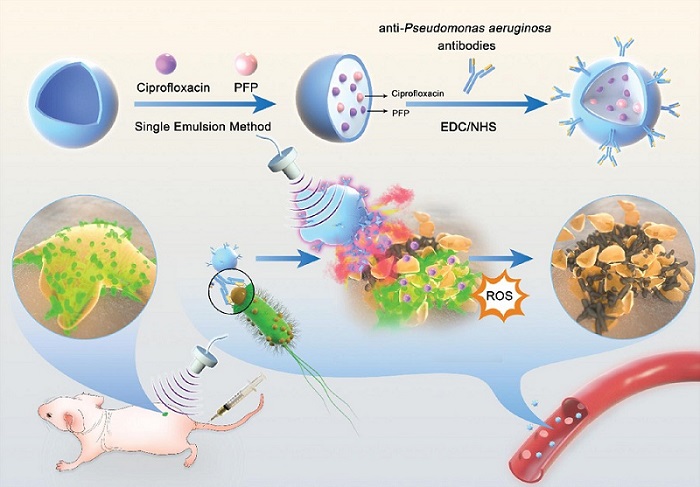Novel Ultrasound-Launched Targeted Nanoparticle Eliminates Biofilm and Bacterial Infection
Posted on 17 Apr 2024
Biofilms, formed by bacteria aggregating into dense communities for protection against harsh environmental conditions, are a significant contributor to various infectious diseases. Biofilms frequently develop on the surfaces of organs and medical devices, such as bones, teeth, urethras, catheters, stents, and contact lenses, leading to complicated infectious diseases. Traditional treatment methods for biofilm-related infections typically involve high doses of antibiotics, which may create severe antibiotic resistance. Among the pathogens that are especially associated with antibiotic resistance, infections caused by Pseudomonas aeruginosa pose a global health threat. Now, a novel ultrasound-launched targeted nanoparticle has been shown to universally destroy biofilms, target specific bacteria, administer antibiotics, and eliminate bacteria through ultrasonic cavitation and antibacterial sonodynamic therapy.
The nanoparticle developed by researchers at Zhejiang University (Hangzhou, China) consists of poly (lactic-co-glycolic acid) loading ciprofloxacin and perfluoropentane with a bacteria-targeted antibody installed on the nanoparticle for binding to specific bacteria. This nanoparticle is highly responsive to ultrasound, and the rapid liquid-gas phase transition of perfluoropentane creates a cavitation effect that destroys the extracellular polymeric substances of the biofilm and enables the antibiotics to penetrate deeper. Additionally, under ultrasonic stimulation, ciprofloxacin promotes the production of reactive oxygen species, enhancing its bactericidal impact and potent anti-infective activity in vivo.

Thus, this innovative ultrasound-activated targeted nanoparticle provides an effective means of antibiotic delivery, bacterial elimination, and biofilm removal. The nanoparticle demonstrated a sensitive response to ultrasonic stimulation, including rapid liquid-gas phase transition, cavitation effect, and biofilm destruction for enabling deeper antibiotics penetration. Additionally, the bacteria-specific antibody was conjugated on the nanoparticle to target and bind to bacteria. Under ultrasound irradiation, ciprofloxacin generated reactive oxygen species in the bacterial cells, effectively killing the bacteria. Therefore, the ultrasound-launched targeted nanoparticle represents a promising approach to manage antibiotic resistance and the removal of biofilms via ultrasonic cavitation and antibacterial sonodynamic therapy.
Related Links:
Zhejiang University














